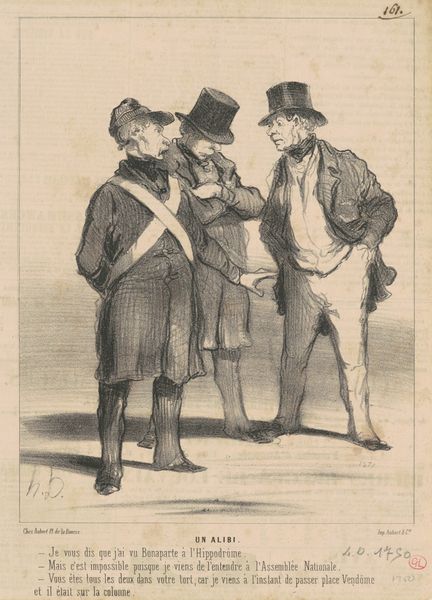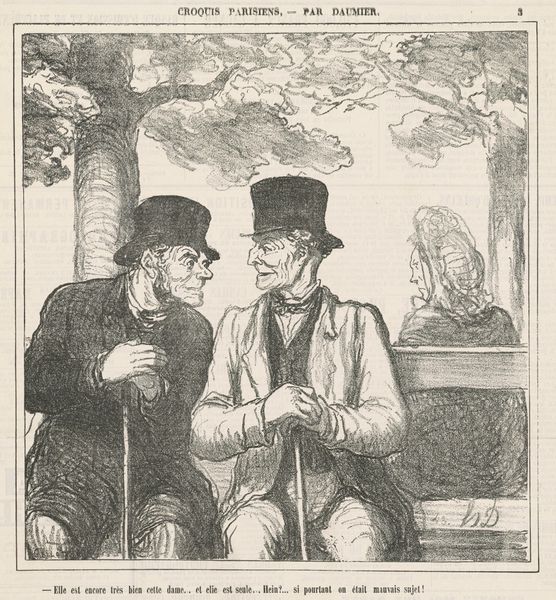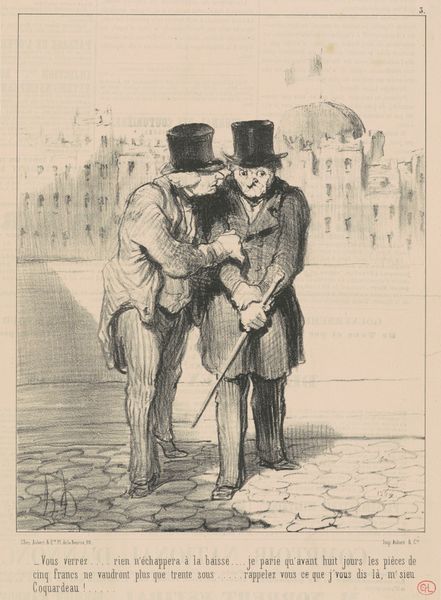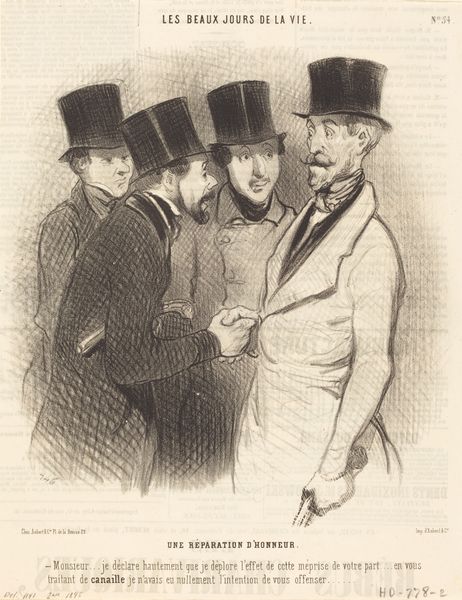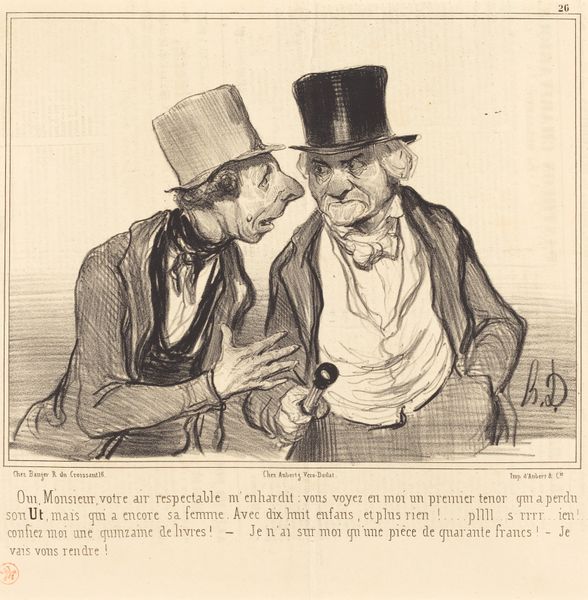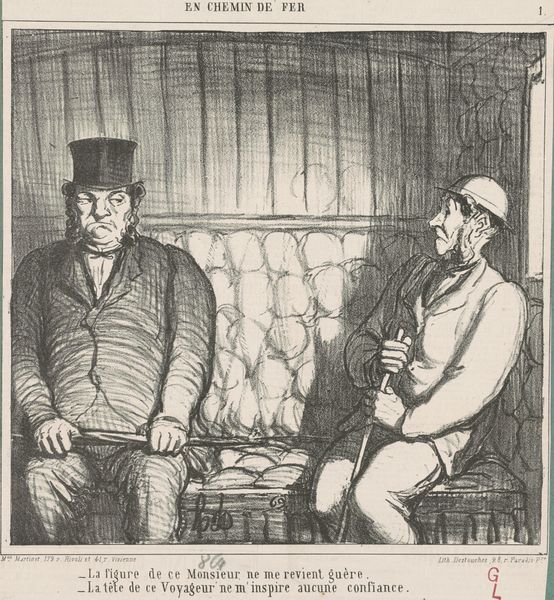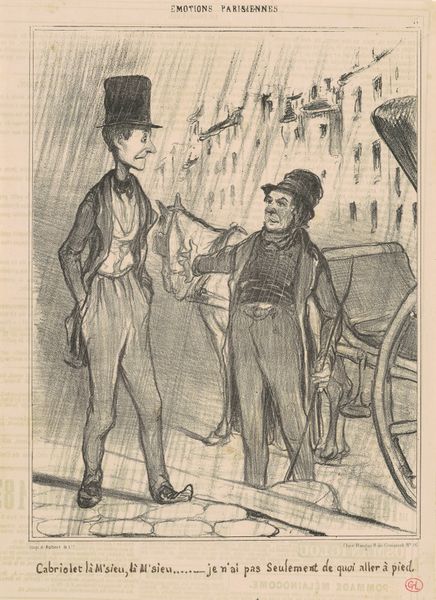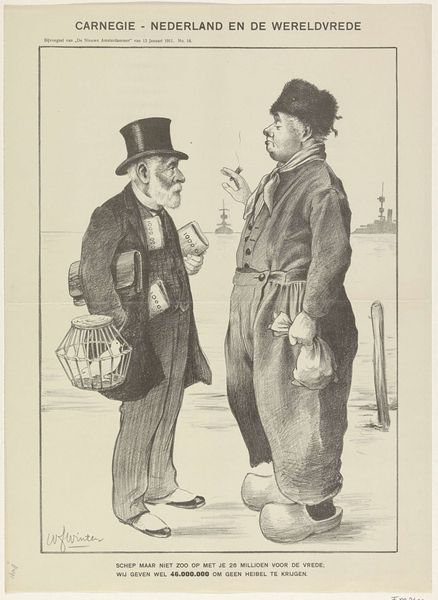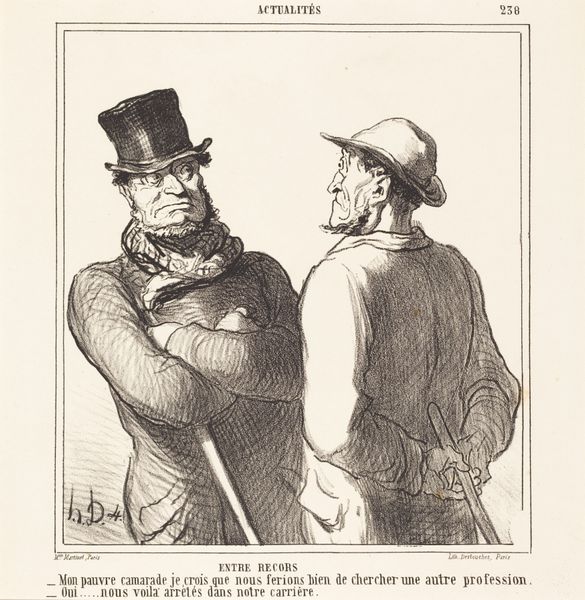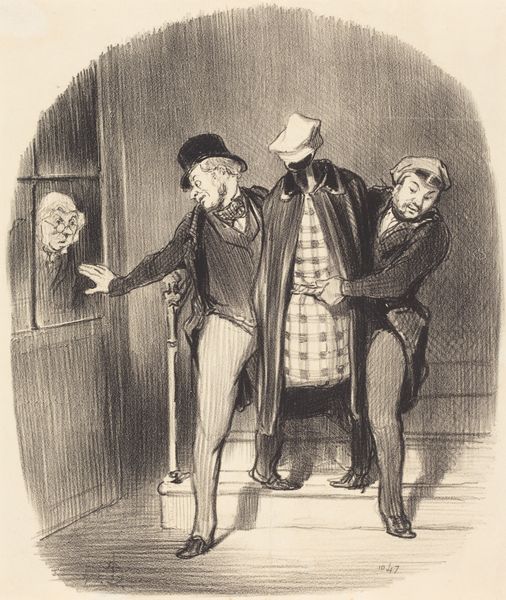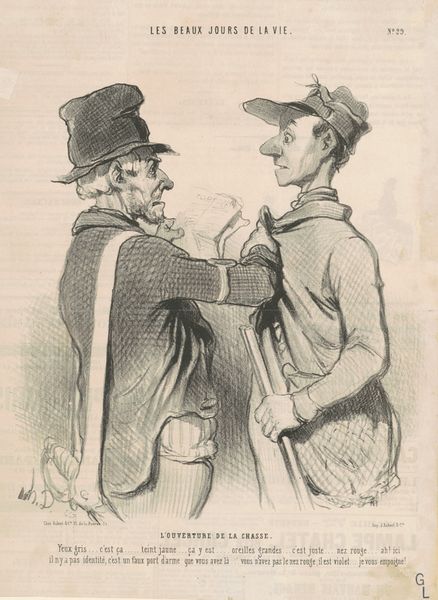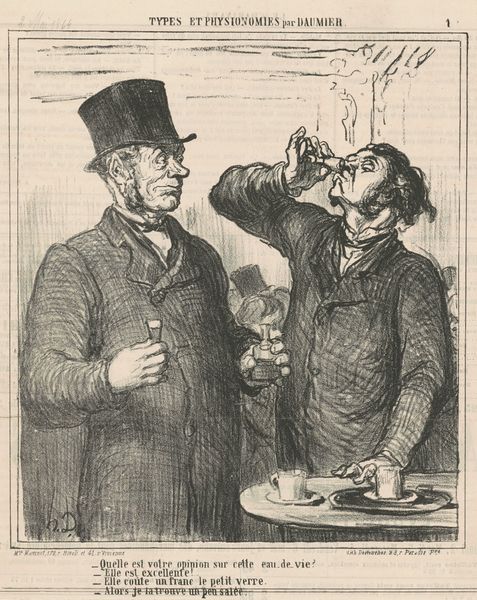
lithograph, print
#
lithograph
# print
#
caricature
#
romanticism
#
genre-painting
Copyright: National Gallery of Art: CC0 1.0
Editor: This is "Le garde du commerce" by Honoré Daumier, a lithograph from the 19th century. It's a fairly simple print depicting two men, with the words "Prison pour dettes" behind one of them. The overall impression is…uncomfortable, a bit bleak. How should we approach interpreting this? Curator: Let's start with the material itself: lithography. Consider the social context. This is a *print*, meant for wide distribution, reflecting Daumier's interest in reaching a broad audience, likely including the very people depicted here: members of the struggling working class or petty bourgeoisie caught in cycles of debt. Editor: So, the choice of lithography suggests a deliberate effort to address this socio-economic reality through accessible art? Curator: Precisely! Lithography, a relatively inexpensive method of mass production, made his social commentaries accessible to those he critiqued or defended. How does that inform the caricature and romantic style employed? What’s the labor behind it? Editor: The caricatures point to the vulnerabilities of individuals facing economic hardship, even turning it into satire… But it humanises them, the material allowing it to be spread. I didn't even consider the labor going into it... Curator: Daumier's caricatures, rendered with the immediacy and reproducibility afforded by lithography, didn't just poke fun; they offered a critique of systems of labor. Where do we place Daumier's romanticism then, understanding that this art piece could've been replicated many times over? Editor: Thinking about the 'romantic' label now, I see how it can be a push against the rigid structures…It is almost challenging to see romanticism in what looked like an attack! That opens a new way to understand its intentions... Curator: Indeed. Seeing Daumier as challenging established methods is insightful. By challenging these through materials and style he questions conventional social order. It can also hint at themes that relate to social equity beyond his immediate view. Editor: That connection between the printmaking and societal context makes so much sense now.
Comments
No comments
Be the first to comment and join the conversation on the ultimate creative platform.
